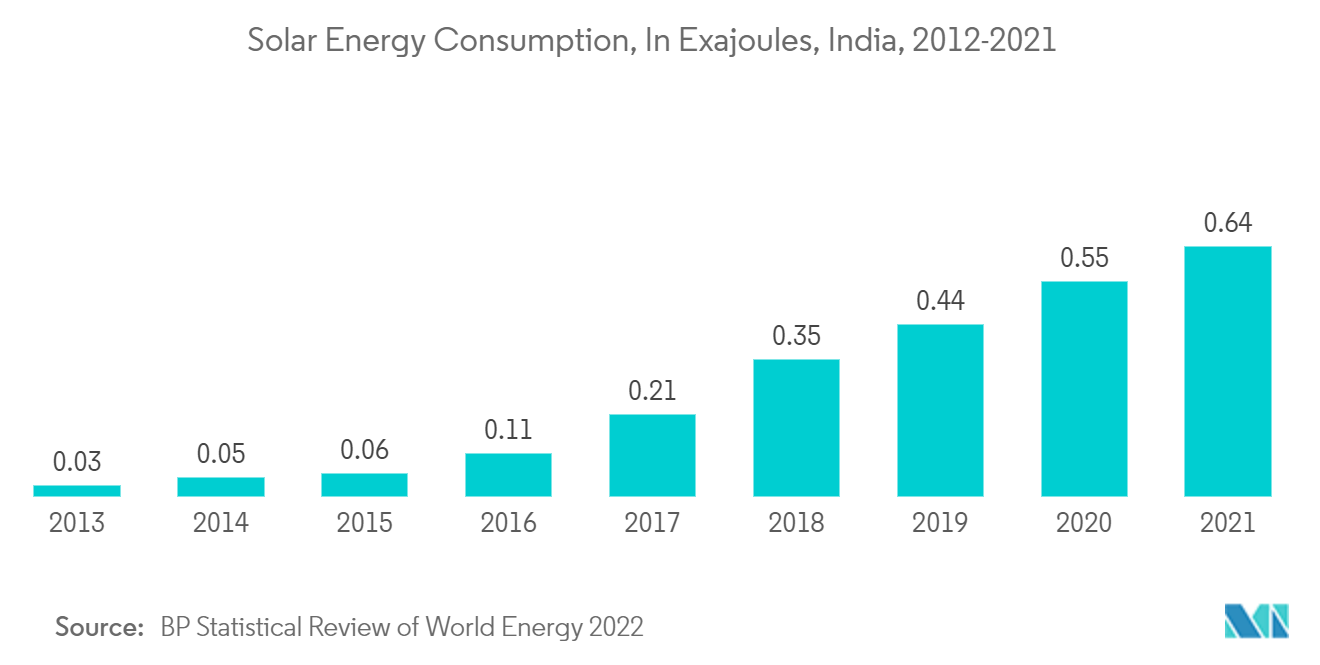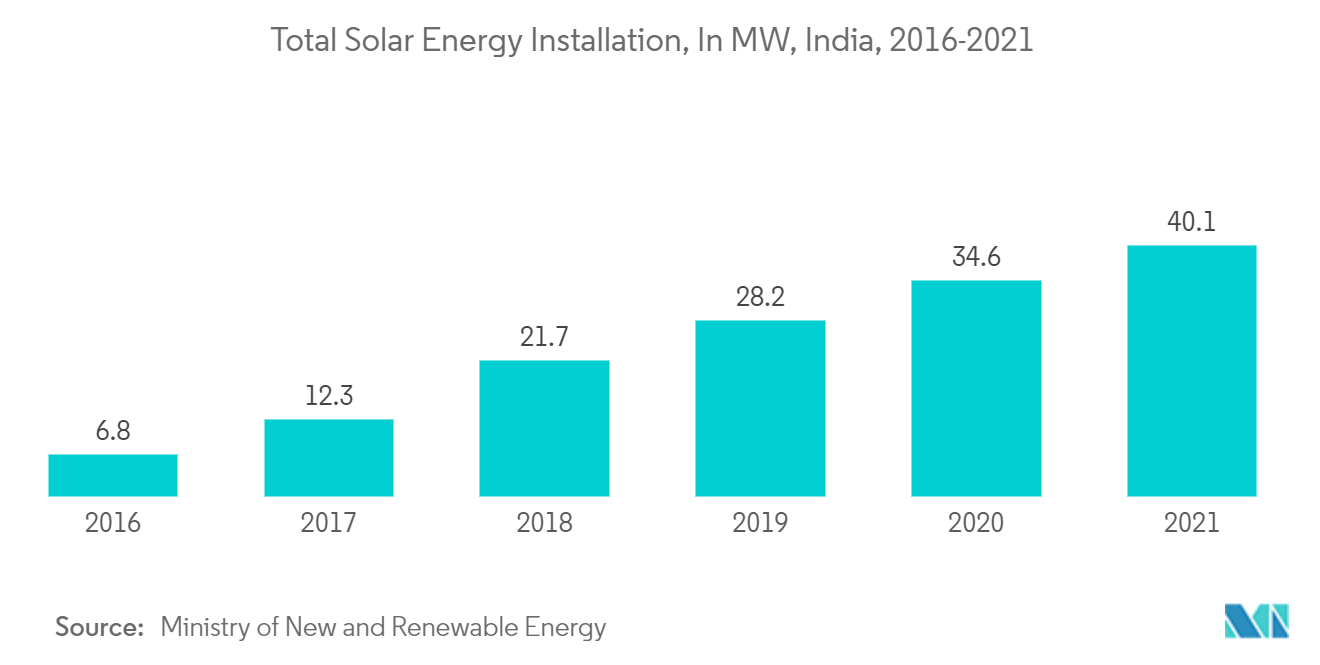Market Trends of India Solar Inverter Industry
This section covers the major market trends shaping the India Solar Inverter Market according to our research experts:
Central Inverters have dominated the market
- In the last decade, India witnessed a significant rise in the consumption of solar-based electricity. In 2012, the total consumption was around 0.02 EJ, reaching 0.64 EJ in 2021. This can be ascribed to the government's various initiatives to increase awareness about solar energy in the country. The increased awareness is anticipated to fuel installing solar energy projects in India.
- Furthermore, In India, the utility-scale solar project dominates the solar energy market, and the central inverter is a large grid feeder. It is often used in solar PV systems. Their sizes can range from 100kW to 100 MW. The central inverters are designed to connect directly to the electric grid. Thus, they are included in a power station.
- The central inverters are floor or ground-mounted inverters and convert DC power collected from a solar module into AC power which is then supplied to the grid connection. The central inverter consists of one DC-AC conversion stage, and in some cases, inverters also have a DC-DC boost stage to increase their maximum power point voltage range.
- A central inverter typically has a maximum input voltage of 1,000V. However, some newer central inverters already come with 1,500V input voltage. These inverters allow PV arrays based on a maximum voltage of 1,500V, requiring fewer BOS (balance of system) components.
- As central inverters are used for utility-scale applications, they should produce the same voltage and frequency as that of the electric grid where they are used. As there are a lot of different electric grid standards worldwide, manufacturers are allowed to customize these parameters to match the specific requirements in terms of the number of phases; most central inverters manufactured are three-phase inverters.
- Therefore, the growing consumption of solar-based electricity coupled with the government's efforts to decarbonize the power sector are expected to drive the segment in the coming years.

Increased Investment in Solar Energy Projects to Drive the Market
- India is also one of the largest markets for solar inverters in the Asia-Pacific region, and as of May 2022, India had a total installed solar capacity of 49.34GW. The Indian solar market has also been growing at a Sifgnicent pace in the last couple of years and is anticipated to grow with high CAGR during the forecast period. This can be ascribed to the goverment supportive policies and a rise in investment from the private player. Furthermore, the government of India is promoting domestic manufacturing, which is likely to fuel the solar inverter market in the near future.
- The domestic market for solar inverters has been growing with rapid rise in solar deployment across all end-user segments. As domestic electricity prices have risen, many consumers in off-grid or remote areas with unreliable electricity supply have opted for solar inverters for backup.
- Furthermore, India has set a target of 175 GW of non-fossil fuel capacity by 2022 and a target of 500 GW of non-fossil fuel capacity by 2030; the government has been rapidly expanding the installed capacity base, especially solar.
- The Indian government has also invested heavily into the residential segment through schemes like the Grid-connected Rooftop and Small Solar Power Plants Programme (Phase II), as demand for micro and string inverters has increased substantially.
- The Grid-connected Rooftop and Small Solar Power Plants Programme (Phase II) was launched in February 2019 and aim to reach a cumulative installed capacity of 40,000 MW from Rooftop Solar (RTS) Projects by the year 2022. The programme is implemented through power distribution companies (DISCOMs)/Electricity Department of States and Union Territories (UT). At the same time, the government will provide additional financial support to help consumers in the residential segment to switch to solar.
- The Ministry of New and Renewable Energy (MNRE) of India has been actively promoting solar energy utilisation by residential and small-scale consumers through rooftop PV systems. To achieve its solar energy targets, the MNRE has launched multiple nationwide schemes and programs offering financial incentives for installing rooftop PV systems.
- All these initiatives and investments are likely to be a significent driving factor in the growth of the solar inverters market in India during the forecast period.

